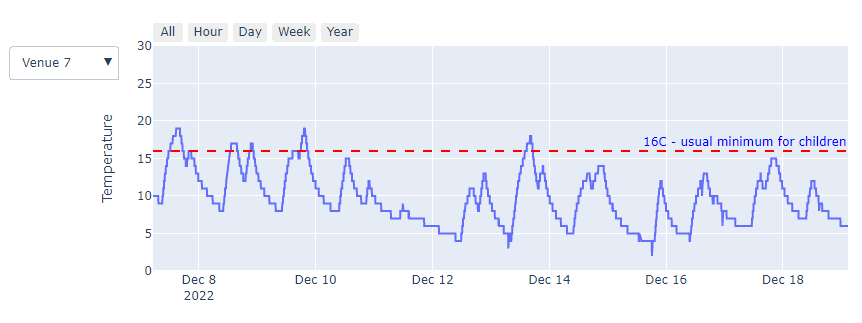Basic observations#
When you turn on space heating, the temperature inside the building won’t rise steadily. It rises quickly at first, and then slower and slower. This is because how hard it is to raise the building by a degree depends on how big the temperature difference is to outdoors. The bigger the temperature difference, the faster heat gets transferred through the walls, windows, ceilings, and floors - the building envelope - to the outside world.
This means that when the heating comes on, the temperature trace on the thermal monitor looks like a wave, at least if no thermostat operates.

The waves won’t look perfect or straight - the monitors are only accurate to within a degree C and there are lots of things that affect what happens, like the external weather (wind and sun as well as temperature), what the building occupants are doing, and how the heating controls work.
This is a typical trace over a longer period.

Each wave is one time when the heating comes on and goes off in the room. The groups who use this space are likely to have very different opinions about whether it is comfortable!
We can’t tell when the heating comes on from the plot. In a room that isn’t too draughty and has a well-designed and maintained system with modern pipework and “finned” radiators, the air temperature should start to rise fairly quickly. Old-fashioned column radiators are slower, as is fat pipework and any system where the pump is the wrong size.
